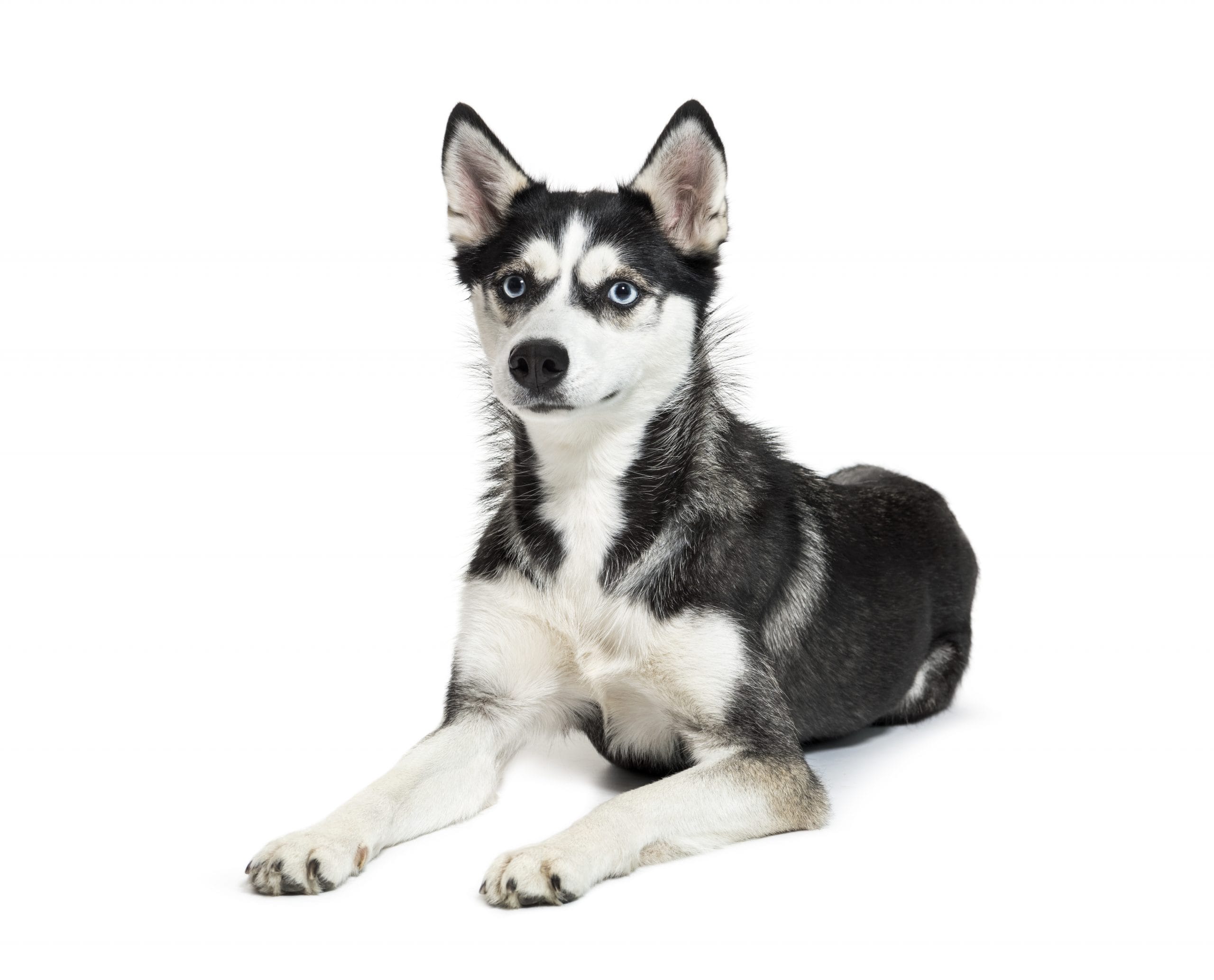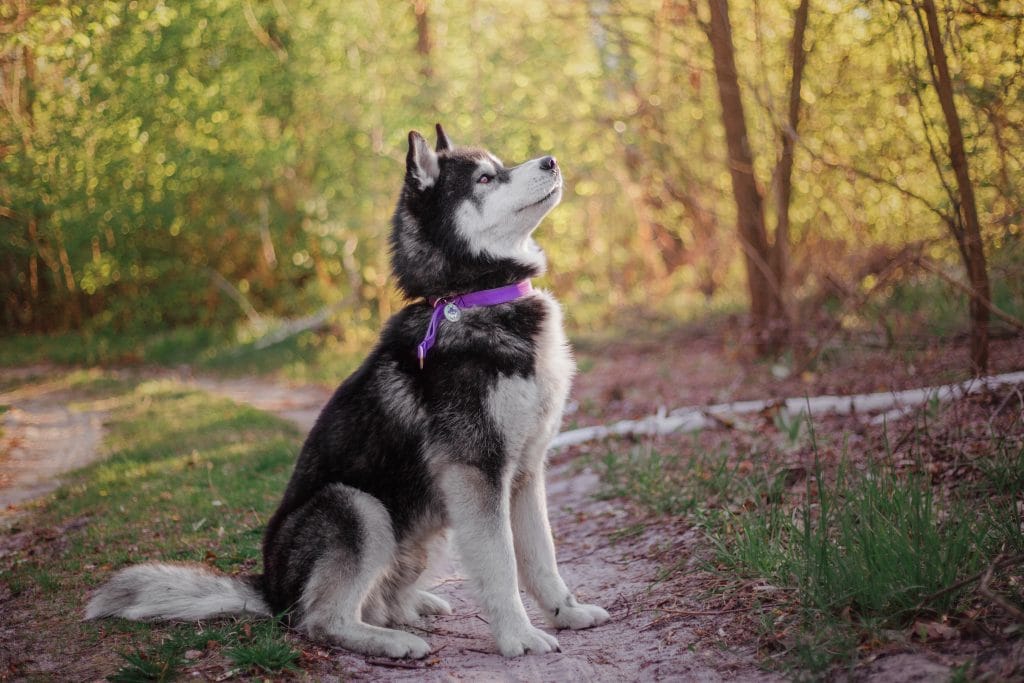
The Alaskan Klee Kai looks like a miniature version of its Husky ancestors. Learn more about this intelligent canine here!
Breed Overview: Alaskan Klee Kai
| Attribute | Details |
|---|---|
| Breed | Alaskan Klee Kai |
| Origin | Alaska, USA |
| Classification | Not recognized by FCI |
| Size | Standard: 38–42 cm (15–16.5 inches) Miniature: 33–38 cm (13–15 inches) Toy: Up to 33 cm (13 inches) |
| Weight | Standard: About 10 kg (22 lbs) Miniature: About 7 kg (15 lbs) Toy: Up to 4.3 kg (9.5 lbs) |
| Build | Slim, long legs, tail curled over the back |
| Eyes | Medium-sized, almond-shaped eyes preferred; any color or combination allowed |
| Ears | Triangular, upright, forward-facing |
| Coat and Color | Black-White, Red-White, Gray-White, or Pure White; most have short fur except on the tail, with some sporting a fuller coat; fluffy undercoat |
| Key Traits | High energy, loves challenges |
| Personality | Intelligent, active, loyal, friendly with family, reserved with strangers |
| Grooming Needs | Low; occasional brushing |
The Alaskan Klee Kai resembles a Husky but is not one. While the Husky is one of its ancestors, the Klee Kai is a distinct breed—active, intelligent, and well-suited for dog sports. These dogs form close bonds with their owners but tend to be shy around strangers. Bright and curious, they love challenges and need mental and physical stimulation to thrive.

The Alaskan Klee Kai – The Little Dog from Alaska
The history of the Alaskan Klee Kai (or AKK) is relatively recent. The breed originated in the 1970s in Alaska when Linda S. Spurlin and her family sought to create a Husky-like dog that could serve primarily as a companion. They crossed Siberian Huskies, Alaskan Huskies, American Eskimo Dogs, and Schipperkes. The name “Klee Kai” comes from the Inuit language, meaning “small dog.”
The Alaskan Klee Kai comes in three sizes: Standard, Miniature, and Toy. Aside from their size, they differ from Huskies in having larger ears and a higher-set waist. While not yet recognized by the Fédération Cynologique Internationale (FCI), the breed is gaining popularity.
Personality of the Alaskan Klee Kai
The Alaskan Klee Kai is an intelligent and energetic dog, known for its lively temperament, quick learning ability, and eagerness to please. They thrive in activities like agility training, where their intelligence and physical skills are put to good use. Such training also strengthens communication and harmony between dog and owner.
Their strong bone structure and agility allow them to handle activities like jumping effortlessly. Winter is their favorite season, and they love playing in the snow. Their thick double coat provides excellent protection against freezing temperatures.
Loyalty is a hallmark of the Alaskan Klee Kai’s personality. They are friendly with their family, adapting quickly and showing a strong desire to please. However, they tend to be reserved with strangers. These dogs make excellent watchdogs and companions, as well as family pets. However, they may not tolerate rough handling, so it’s advisable to supervise interactions with small children.

Training and Care of the Alaskan Klee Kai
Thanks to their small-to-medium size, Alaskan Klee Kais can adapt to living in smaller homes, provided they get enough exercise. Regular walks and varied routes will keep them mentally stimulated. If they don’t get enough activity, they may become nervous or display undesirable behaviors.
These dogs also have a strong prey drive, so households with small pets should be cautious. Without proper training, they may try to stalk or even chase other animals.
Interactive games, such as fetch or learning new tricks, challenge the Klee Kai and strengthen the bond between you and your dog. They require plenty of human interaction and affectionate reinforcement to build their confidence. Socializing with other dogs is also vital, as playtime with canine friends is one of their basic needs.
Grooming and Health of the Alaskan Klee Kai
Grooming an Alaskan Klee Kai is relatively straightforward. They shed their coat twice a year (for summer and winter), during which frequent brushing is recommended. They come in four coat color combinations, all featuring white: Black-White, Red-White, Gray-White, and Pure White. These colors are independent of size.
The breed is not prone to specific genetic disorders or health problems and generally lives 12 to 16 years.
Other Breeds You May Like
- Tosa Inu: The Tosa Inu, also known as the Japanese Mastiff, is the largest Japanese dog breed. This dignified giant is a loyal, patient companion, excelling as a watchdog and family pet.
- Shiba Inu: One of the most popular breeds in Japan, Shiba Inus are intelligent, affectionate, and loyal, making them delightful companions.
- Akita Inu: Declared a “National Natural Treasure” in Japan in 1931, this large and striking breed has gained international popularity for its noble demeanor.
- American Akita: Larger and heavier than the Japanese Akita Inu, the American Akita, also called the “Great Japanese Dog,” is known for its strength and loyalty.
- Hokkaido: This excellent hunting and guard dog requires experienced handling, as it tends to follow one leader. Obedience depends on clearly established leadership.

Leave A Comment